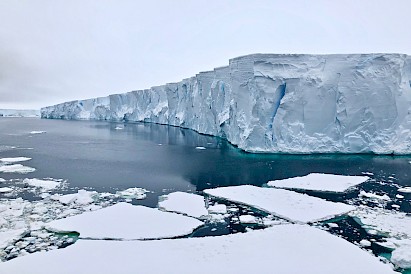Scientists embark on mission to investigate 'doomsday glacier'
 Thirty-two scientists are beginning a mission to investigate the melting Thwaites Glacier, according to The Associated Press.
Thirty-two scientists are beginning a mission to investigate the melting Thwaites Glacier, according to The Associated Press.
The glacier is the widest in the world and is nicknamed the “doomsday glacier” because of its massive size, comparable to the size of Florida. It faces the Amundsen Sea and may lose ice mass because of warm water.
The mission will last more than two months aboard an American research ship.
Seas could rise more than two feet in the span of hundreds of years if Thwaites melts. It is currently shedding 50 billion tons of ice into the water every year.
The glacier is responsible for 4 percent of global sea rise, reports the British Antarctic Survey.
Conditions causing its loss of ice are accelerating, ice scientist Ted Scambos said from the McMurdo land station.
The United States and United Kingdom are undertaking a joint $50 million mission to research Thwaites. The team, including Anna Wahlen of the University of Gothenburg in Sweden, will use two robot ships to get beneath Thwaites.
“Thwaites is the main reason I would say that we have so large an uncertainty in the projections of future sea level rise and that is because it’s a very remote area, difficult to reach,” Wahlin told the AP in an interview.
The scientists will measure the sea floor, water temperature and ice thickness, Wahlin says. They will monitor the structure of the ice and any cracks in the ice, as well as tagging seals on islands near Thwaites.
Thwaites is located on the western half of Antarctica, east of the Antarctic peninsula. The ice-water interface at Thwaites has never been explored by foot before.
A team explored Thwaites using a robotic ship in 2019 but did not go ashore.
The Research Vessel Nathan B. Palmer departed from its port in Chile on Wednesday.
You can return to the main Market News page, or press the Back button on your browser.

